John Wardle Architects restores and extends Captain Kelly's forgotten Tasmanian cottage
October 28, 2018Australian studio John Wardle Architects has painstakingly restored an original weatherboard cottage in a remote bay on Bruny Island in Tasmania.
The 320-sqaure-metre cottage dates back to the 1840s when it was built by its namesake, Captain Kelly – a harbourmaster who was noted for his voyage around Tasmania in a whaleboat and for being the first Australian to enter the Antarctic Circle in 1832.
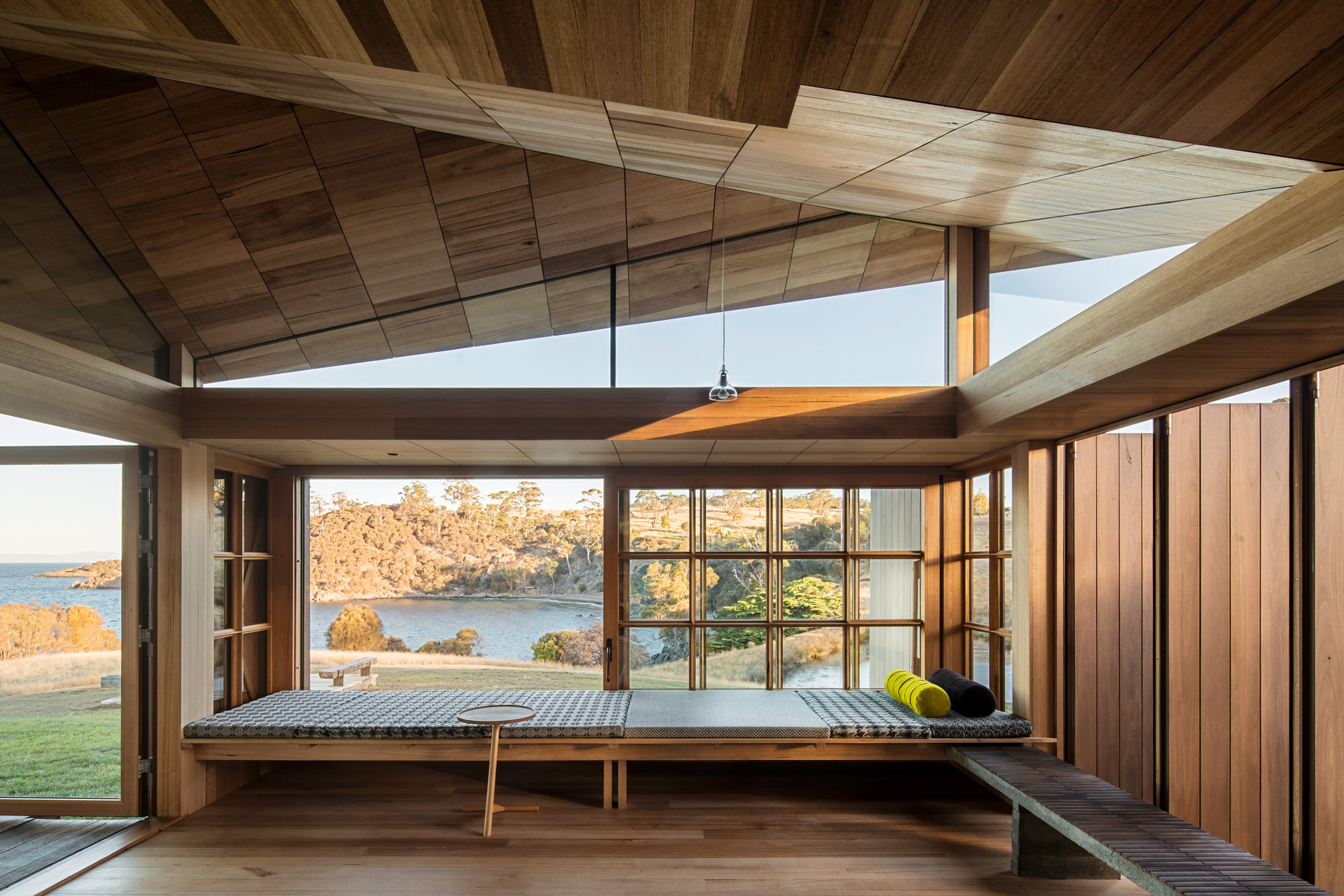
John Wardle Architects has restored the dilapidated Georgian dwelling to its original condition, while also adding contemporary interventions to the interiors to bring them up to date. The finished result earned the firm a place on the shortlist in the House interior category of 2018 Dezeen Awards.
"The original cottage was deteriorating due to its age and its harsh environment," explained the architect.
"Over 175 years there had been many unsympathetic alterations to the small cottage. Part of our work involved the removal of these non-original works, to respectfully return the cottage to its original form."
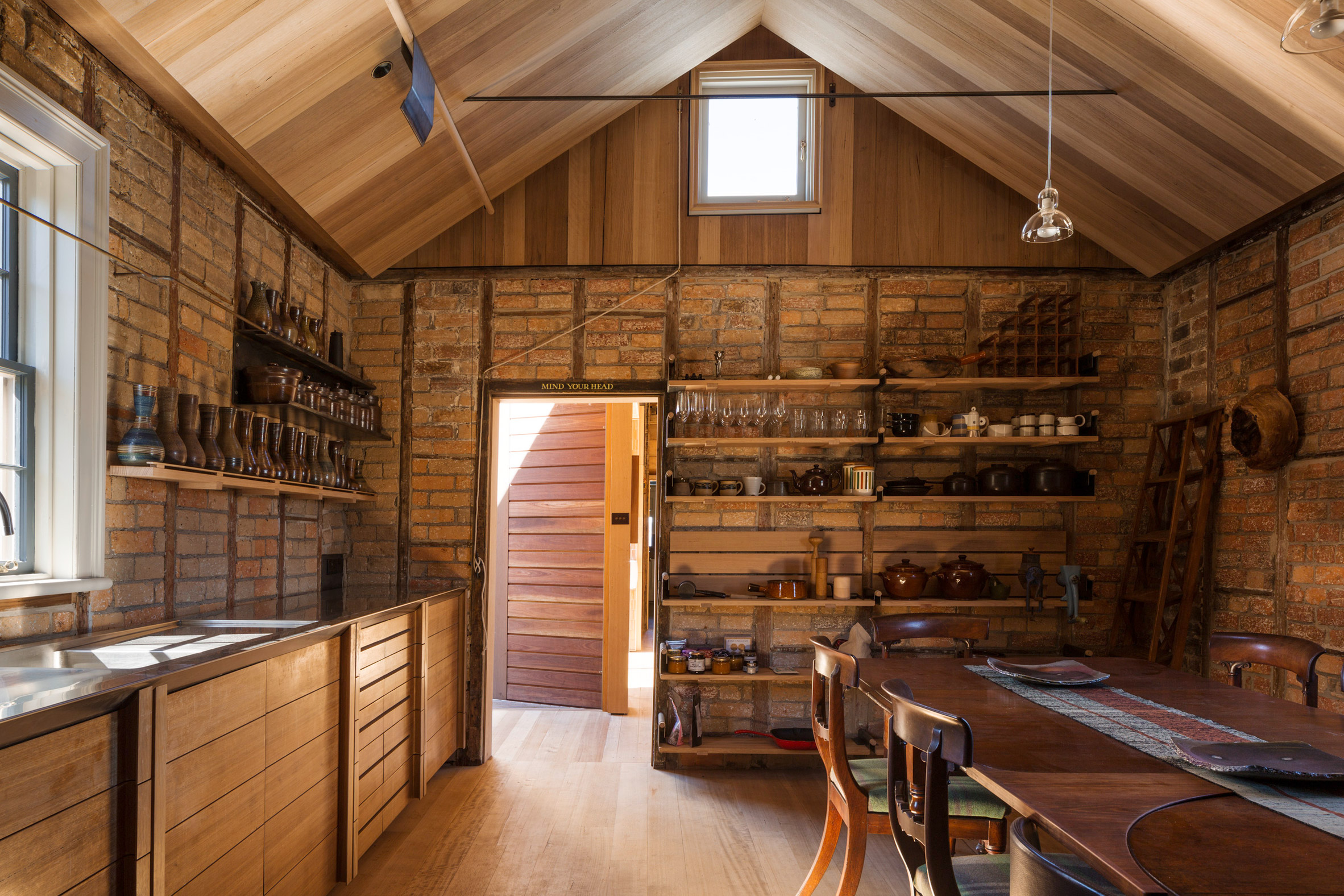
By tracking through libraries, original diaries, and detailed logbooks, the architects discovered that the various ship hands of Captain Kelly may have built the house during the whaling off-season for Kelly and his daughter to live in.
The original cottage consisted of two structures – one containing bedrooms and the other a kitchen, surrounded by a wide verandah.
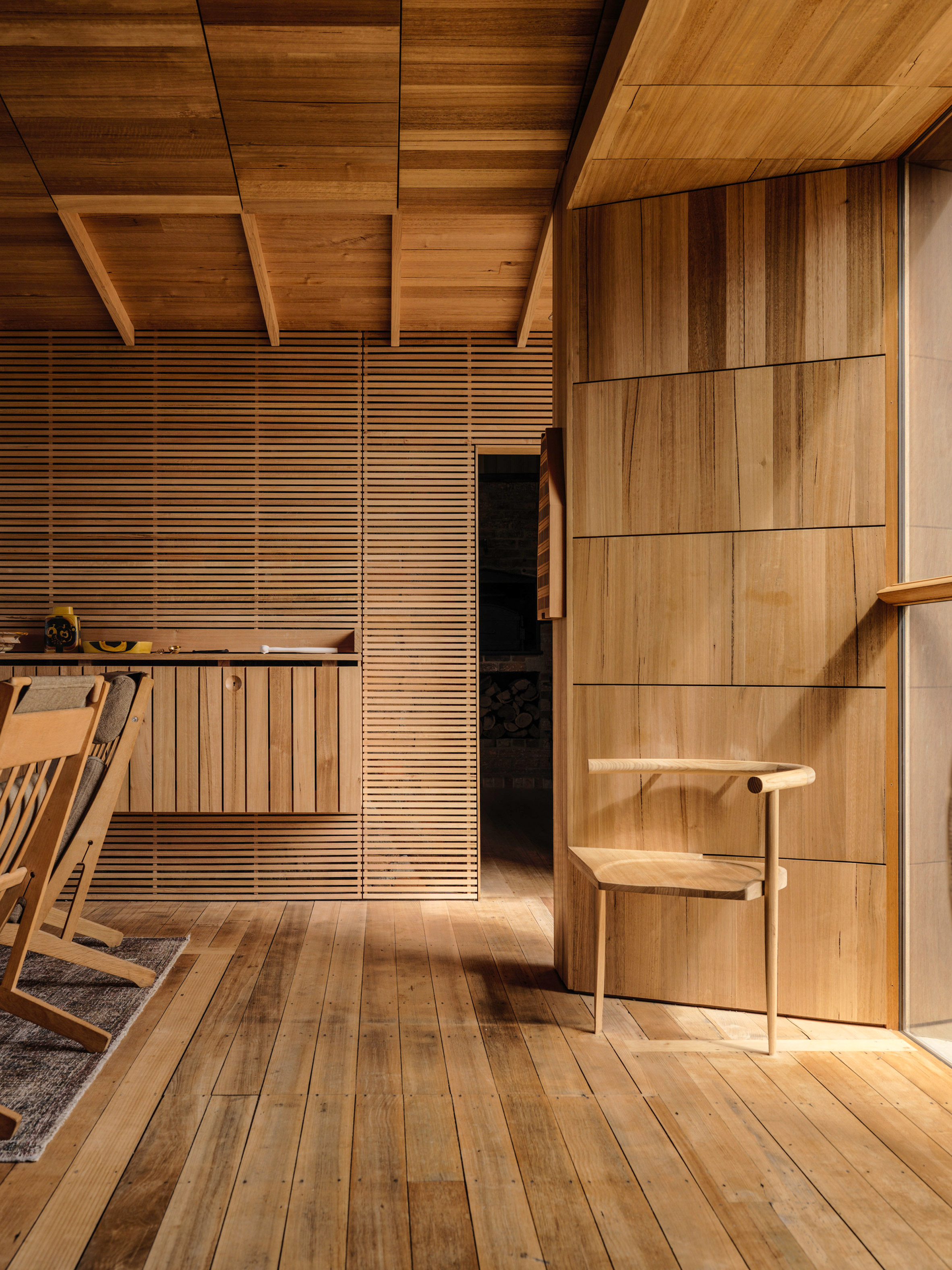
The architects inserted a number of contemporary interventions within the heritage structure to make the building suitable for modern day living.
A new living area, which has been placed between the existing kitchen and bedroom structures, is filled with built-in and custom-made loose furniture including a writing desk and coffee table designed from materials left over at the end of construction.
A full-length window seat with flat cushions upholstered in fabrics from Portugal has views to the bay. The curtains were purchased in Kolkata, the tiles in Tokoname in Japan and the light fittings from Milan
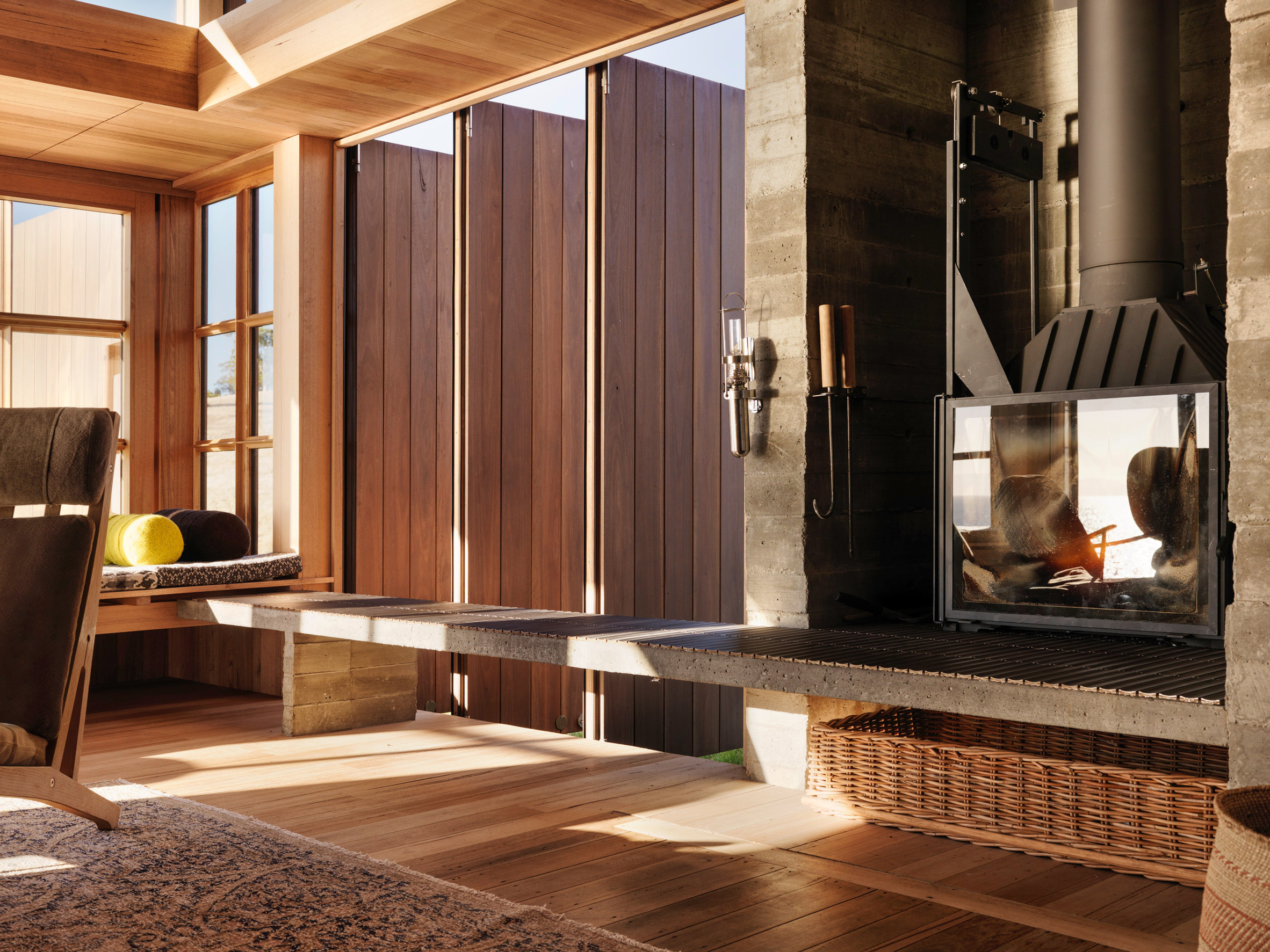
"These global imports accord with those parts of the house: its windows, doors, staircase, paint and nails not available at the time in the new colony," explained the architects.
"All of the timber for structure, floors, walls, ceilings, windows, cabinetry and furniture were produced from a single pack of Tasmanian Oak sourced from a local mill, as were the original primary elements of the construction."
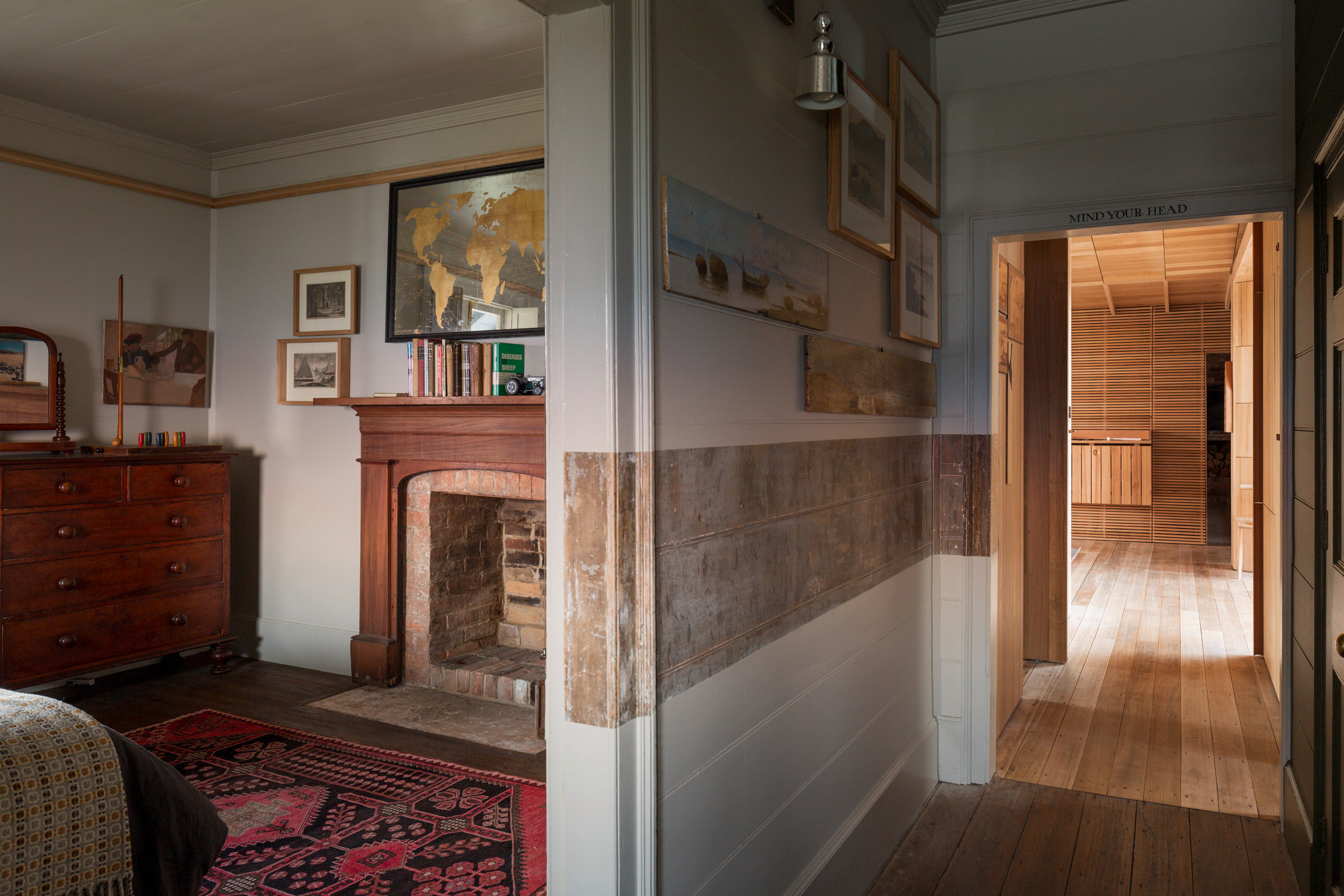
The original layered soffit and exposed ceiling rafters on the cottage's verandah have been continued into the new entry and living spaces to create continuity between the old and new structures.
"In effect, the verandah extends and encapsulates the new works tying new and old together," explained John Wardle Architects. "This is reflected both in plan and section."
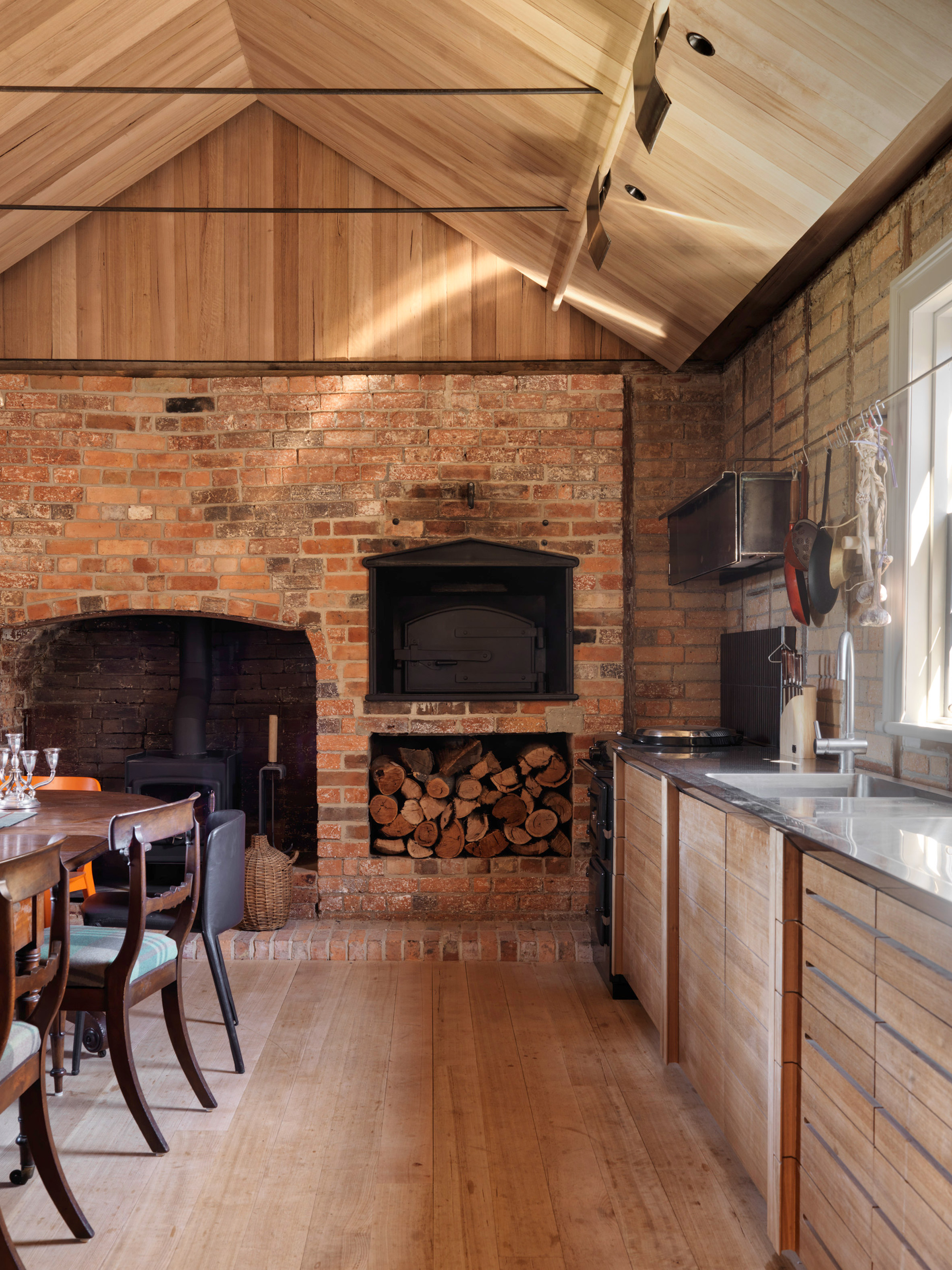
The cottage's original kitchen was restored with its 1960s profile weatherboards removed and original profiled boards fabricated and installed externally. Evidence of an old bread oven prompted the architects to create a new brick oven and cast iron facing incorporated into the masonry wall.
A sheltered north-facing courtyard built around existing 100-year-old walnut and mulberry trees has been inserted into the leeward side of the cottage while the chimney, which had long since been removed, has been reinstated in its original position. Made of white ghost bricks, the architects said that the new replica chimney "helps to define and warm the courtyard space".
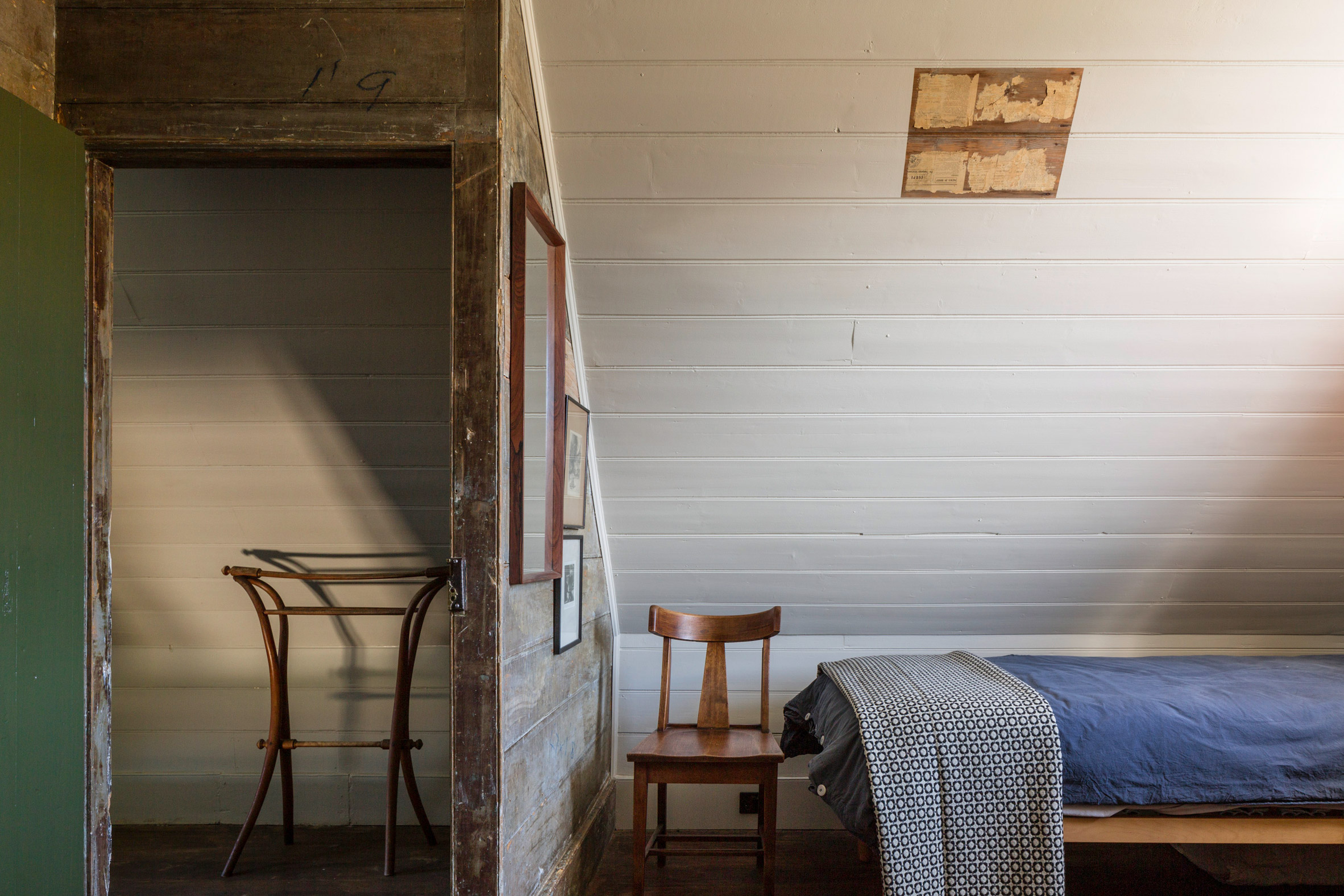
In addition to the new structures, the restoration process involved the removal of many layers of paint that led to the discovery of the original colours. These have been revealed in parts and provided inspiration in other areas of the house.
Yellowing newspaper clippings found under paint are also on show. Meanwhile old construction techniques that were uncovered have been incorporated into the cottage's new works where possible.
Also shortlisted in the House interior category is this church conversion in Islington, London, which uses materials as sparingly as possible to match the owner's pared-back lifestyle.
Photography is by Trevor Mein.
Project credits:
Architecture practice: John Wardle Architects
Project team: John Wardle,
Andrew Wong,
Danielle Peck
Construction team: Scott Cordwell, Cordwell Lane Builders
Structural engineer: Gandy & Roberts Consulting Engineers
Building surveyor: Holdfast Building Surveyors
Architectural historian: John Matthews
The post John Wardle Architects restores and extends Captain Kelly's forgotten Tasmanian cottage appeared first on Dezeen.
from Dezeen https://ift.tt/2qgZTnq
via IFTTT
0 comments